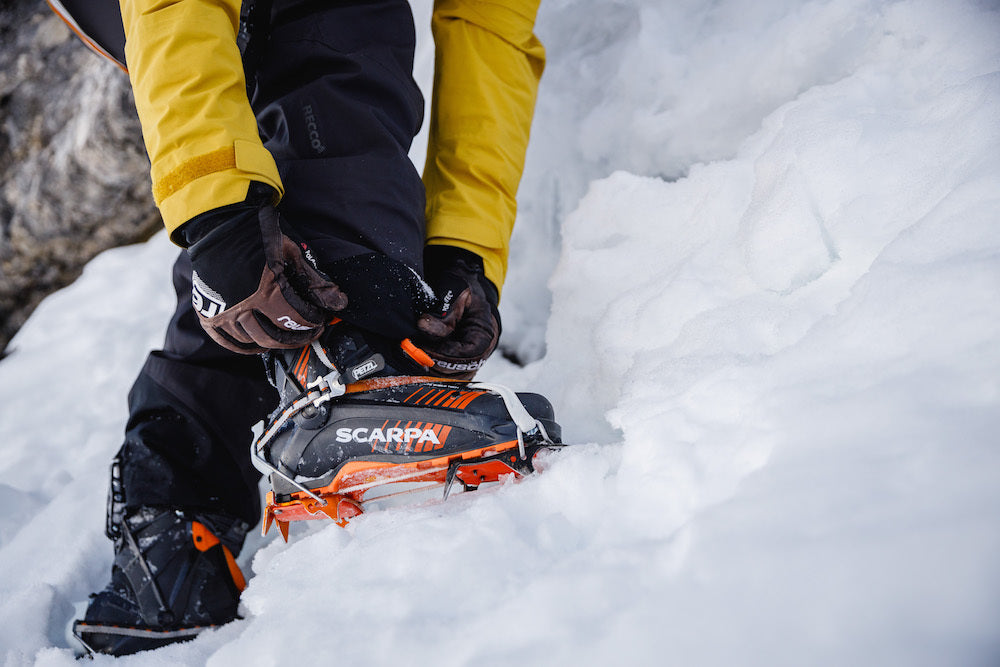A Challenging Yet Feasible Endeavor
Ice climbing enthusiasts often find themselves in situations where adapting gear becomes a necessity, and one common question arises: can ski boots be used for vertical ice climbing? The consensus among climbers is yes, but with certain caveats.
The Possibility and Challenges
Ice climbing in ski boots is indeed possible, and some experienced climbers, like American legend Charlie Fowler, have successfully tackled challenging routes in ski boots. However, it's crucial to note that while it's feasible, it comes with its own set of challenges.
Advantages
1. Fewer Pieces of Equipment:
- Ski boots can serve a dual purpose, saving climbers from the hassle of carrying an extra pair of boots during long approaches or alpine routes.
2. Cost-Effective:
- If you already own ski boots, using them for ice climbing eliminates the need for an additional investment in specialized footwear.
3. Increased Power and Warmth:
- The weight of ski boots can provide additional power when kicking into the ice, making it easier to drive crampons into the surface. Moreover, the bulkiness and insulation of ski boots can contribute to better warmth during cold climbs.
Disadvantages
1. Limited Precision:
- Ski boots lack the sensitivity required for precise footwork. Thin ice or mixed routes with tiny holds may pose challenges, as it becomes harder to assess the quality of placements.
2. Reduced Flexibility:
- The rigid shell of ski boots restricts ankle flexibility, making complex moves and certain ice climbing techniques more difficult to execute, especially on lower terrain.
3. Fatigue and Weight:
- The weight of ski boots can lead to quicker fatigue, and the overall heaviness may impact a climber's endurance throughout the day.
4. Compatibility Issues:
- Finding crampons that fit securely on ski boots can be a challenge. Not all crampons on the market are designed to accommodate the unique shape of ski boots.
Gear Recommendations
To maximize the potential of ice climbing in ski boots, consider the following gear:
Boots
Not all ski boots are suitable for ice climbing. Alpine Touring boots (AT boots) are recommended due to their flexibility and lighter design. Comfort is paramount, so choose boots that provide a snug fit without causing discomfort.
Crampons
Ensure that the crampons selected have a metal toe bail wide enough to fit over the front of ski boots. Compatibility is key, and trying out crampons with your boots before purchase is advisable.
Conclusion
Ice climbing in ski boots is a viable option, especially for those who already own ski boots or need to streamline their gear for long approaches. However, climbers should be aware of the limitations and challenges associated with using ski boots, including reduced precision and increased fatigue. As with any outdoor activity, safety is paramount, and climbers are encouraged to exercise caution and seek expert advice when necessary.


1 comment
I’ve found that lightweight 2 buckle skimo boots work pretty well up to the limits of what I’ll currently lead in any boot on pure ice which is WI4+. I can’t comment on harder grades but since folks have climbed much harder with much more rudimentary gear back in the day I don’t see it being a huge issue. The biggest limitation for me is that the cuffs need to be in “ascent” mode to give you the flexibility you want. This can occasionally be a little awkward with rope and crampons snags on the boot cuffs, especially on easier terrain. I’ve only climbed very moderate mixed terrain with this setup and it is a little tricky as ankle articulation is more important and more awkward. Also, the leverage of being way out on a front point can cause your heel to pop up if you don’t really cinch it down snug!